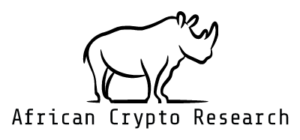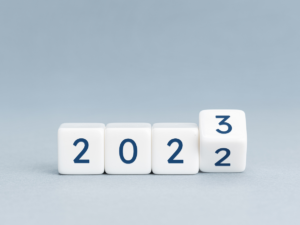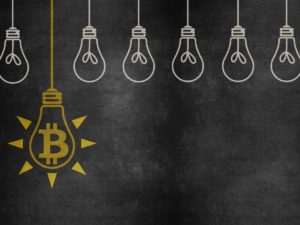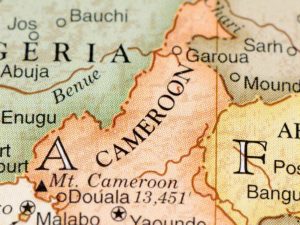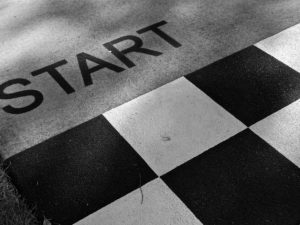Welcome to our recurring segment, African Crypto Spotlight. Periodically, we will sit down with someone in the African crypto ecosystem and get to know them on a personal level. This week, we sat down with Kenyan NFT co-creator of the Colour of Code, Kamau Kamau.
SM: Kamau, how old are you? You look 15. Do I need to ask for your parents’ consent for this interview?
KK: Very funny. I am 23.
SM: Congratulations. So you have the same first and last name? Kamau Kamau?
KK: Kamau is actually my last name. I have an English first name, but nobody in the NFT space knows it. Do you know how much joy that gives me?
It feels weird for me that we Africans have these English names yet you don’t see it in the other direction.
SM: This explains why you always call me by my last name! As an African guy named Shaun, I totally understand what you mean. For me at this stage my name is so tied to my identity I wouldn’t be able to go by something else.
KK: That’s also a very fair perspective. My co-founder, who I made the Colour of Code project with, is called Ian Wright. He is Kenyan born and darker than me. Everyone is super confused when they meet him.
SM: I can see why that would be confusing.
KM: Exactly.

Ian Wright, Co-creator of the Colour of Code.
SM: Ok, so let’s talk about NFTs.
KK: Why not.
SM: I see your project got featured as a Notable Drop on a major NFT marketplace this week – OpenSea – that is pretty cool!
KK: Yes I was very happy about that. It’s nice to see our work being recognised.
SM: Tell me about how you got involved with crypto.
KK: I first heard about crypto in 2015, then I started dabbling in peer to peer (p2p) trading via Local Bitcoins in 2018 as my friend was making a lot of money doing that.
My p2p trading career didn’t last long because PayPal locked my account for six months after three transactions due to what they deemed to be suspicious activity.
Fast forward to December 2020, I saw Bitcoin run from $18K to $35K, and I decided to investigate what was going on. I ended up signing up for an exchange in February 2021 after a very difficult verification process that took months.
SM: How did you get into NFTs?
KK: In the same month of February 2021, an artist that I respect just tweeted: “If you are an artist look into NFTs.” That was the entire tweet, no thread, no links, nothing. I googled NFTs and discovered it was connected to crypto.
I then went down the rabbit hole and started looking at what people were doing. What was popping at that time was 3D art.
I kept watching Foundation – an NFT marketplace – to see what was trending and never saw any photography work. It was either 2D or 3D animation.
There was one creator who used to sell GIFs of herself eating different types of fruit. Did you ever see that one?
SM: The internet is hilarious. No, I never caught her work, but we will link to it so the readers can see what you are referencing.
KK: Every single time I visited Foundation her stuff was selling for 1 ETH plus! I was like wait, what the hell is going on?! NFTs definitely had my attention at that point.
The turning point came when I saw how well Dada Boipelo was doing. She was one of the pioneers of NFT art in Kenya and was very vocal on twitter about NFTs.
At that point I went through the process of setting up my social media, Foundation, wallets – everything. I had no idea what I was doing.
SM: Yes, unfortunately it’s still quite an uphill battle for people to get going with crypto. But I believe we are gonna get there eventually because the commercial imperative to make crypto onboarding smooth is so strong.
KK: Right. So at first I didn’t even know there was a Kenyan NFT community, let alone an African one.
I created my account on Foundation, but did not have creator privileges, as you have to receive a certain amount of upvotes before you can post an NFT. The Foundation system is very complicated and can be frustrating when you are starting out.
Then I came across Kigg’s work and could see that the art was extremely good. I couldn’t believe that someone that good was from Kenya.
He had posted a long thread about how each piece in his collection related to mental health and I went and liked every post. Then he sent me a message, saying he had noticed I was into NFTs.
At the time I was still lost and trying to figure out how to get my work onto Foundation. Kiggs gave me a Foundation invite and opened my eyes to the Kenyan NFT community and all these Kenyan people that are making big moves in NFTs.
He has really held my hand throughout this process. We have never met in person – all I can say is the power of Twitter is amazing.
SM: I agree. To me, Twitter feels like a piece of enterprise software like Microsoft Office or SAP, because you can do so much business on it. Tell me about your experience minting your first NFT.
KK: That’s a funny story. Ok, so now I am on Foundation thanks to Kiggs, but I find Ethereum gas fees are insanely high. They are much higher today, but even back then it was still a lot. Generally, for any creative starting out, getting $150 to invest in something online that you are not sure will work out is tough.
So I pitched the idea to my dad via text message and he didn’t reply. Then I asked him in person when we were out shopping for groceries and asked: “Dad, did you see the text? What do you think?”
And he responded: “Crypto is a scam. This is that Bitcoin stuff where people lose their money trying to trade.” He was saying it in Swahili too, which looking back, made it even funnier.
SM: You paint such a vivid picture, this is gold.
KK: I tried to explain to him that I wasn’t trying to trade but sell my art, but he was unconvinced. He loves technology but is a conservative guy on some things. For example, he hardly uses M-PESA, whereas I haven’t done a cash transaction in months.
So I went to my mother and asked her to give me a $150 loan. It didn’t even take 10 minutes for me to convince her about NFTs before she transferred the money to me. I told her: “Mum, it’s going to make sense in a few years.”
I ended up using $140 to mint my first NFT in August 2021, and within 4 days, Daliso had bought it for $1,000!
SM: Wow, that is such a wonderful story! Shoutout to Daliso. How did your mother react?
KK: She was thrilled. I even paid her back double what she gave me and I continue to send her money whenever I make a sale. I wouldn’t be here without her, she really believed in me. My dad is super cool and I still love him a lot.
SM: I can totally relate to this story. Crypto can be very volatile and your dad’s instincts to be cautious are well placed.
KK: Absolutely. Ok, so the proceeds from that first sale are what I have built everything from and I haven’t taken any more loans. I am still tight with Daliso to this day.
Even if the NFT market collapsed tomorrow, I have gained so much from it in terms of the relationships I’ve made. For me that’s fulfilling enough as it is. Now I can show up in Nigeria, South Africa or Zimbabwe etc. and I know people I can look up.
Ignis, Kamau’s first NFT.
SM: Yes, I love getting into the Twitter spaces and seeing all these people from across Africa and the diaspora just hanging out and joking around. I had never witnessed that before I got into the NFT scene. Dare I say, it seems like we are beginning to realise the Pan Africanist vision. Please continue with your story.
KK: Justin Aversano bought my next NFT. He has this project called Twin Flames, showcasing twins. It’s a really well executed project. You know a project is well executed when you ask yourself “How didn’t I think of this?”
Anyways, one day in August he went on an African NFT shopping spree and bought my work. This was thanks to Abi. Abi was encouraging me to join this Discord for photographers. At first I thought it was a scam, because that’s usually the case when people message you like that. She ended up sharing my work with Justin and he bought it.
SM: Do you think the market pushes African creators to make a certain type of art?
KK: I have been thinking about that a lot. There is a photographer I have been following for a while and his stuff started selling faster once he made it more “African.”
I have put my face out there and people can see that I’m African. I feel like everyone has a certain expectation the moment they hear “African artist.”
I wonder if I should have gone pseudo and had a random profile photo. I don’t like those expectations, I just want to create what I want to when I’m inspired.
SM: Right, I think there is room for the market to evolve to a stage where African artists are not boxed into a situation where they feel that the only way they can succeed is if their art has overt African themes.
KK: Agreed
SM: Let’s talk about your generative artwork. Can you explain for us what generative art is?
KK: Generative art, in a nutshell, is art created with computer code. You know how you can open up Microsoft Paint and brush over something? You can do that with code – you are coding the paint strokes and also coding the paint brush. The power of code is immense.
SM: This is why I love crypto, the range of subjects that it touches are so broad. I know very little about this stuff, so let’s take it slow. How did you discover code generated art?
KK: Fidenza. This is my favourite project of all time by Tyler Hobbs.
SM: I just pulled it up, it’s amazing. The floor price is hundreds of thousands of dollars!
KK: It was a very blue-chip project. From a coding point of view, to get such an output, trust me, this is absolute genius. It is amazing on so many levels. This algorithm is so well written, I’m sure you couldn’t even come up with it in a week. It’s very pleasing to the eye.
Look at the patterns, they don’t overlap. Secondly, the colours are balanced, the numbers of reds, yellows and blues per piece are calculated. From a developer’s perspective this is amazing, it is extremely good. It’s very well written code, the randomisation is perfect, you can actually tell apart each piece.
So that’s the one that opened my eyes into this whole new world of generative art.
A selection of pieces from the Colour of Code
SM: I like the passion you display when you talk about the Fidenza project. Let’s talk about the creative process you and Ian Wright followed on the Colour of Code, which is also a generative project. How did you make it?
First of all, you need an IDE, which is a graphic user interface where you write the code. That’s where you debug. We use Visual Studio. Ian and I love the user interface.
You create something called a random function. Functions are basically blocks of code that when executed they do something. So for example, you can create a function to end this video call after 40 minutes – this is what Zoom does for users without a premium account.
Ian and I hard code everything from scratch. Ian is a coding genius. We worked remotely over two months and made over 100 pieces, and then we picked 20 to release as the Colour of Code project.
We write our code in javascript, a programming language which is very popular for generative art. Python is my favourite language. It is very good for anyone who is looking to get started with coding. You type in your commands as you speak them. As opposed to a language like C where you have to write 10 lines of code just to output one sentence.
Ian and I both study computer science and these are techniques that we learnt in school – loops, object-oriented programming etc. The latter is one of my favourite units.
SM: Kamau, it has been such a pleasure speaking with you today. I learnt so much from you and I am so confident that bigger things are ahead in your future. Please drop some links so that our readers can follow your progress.
KK: Of course, thank you Musuka. I did not expect us to talk for this long.
People can find all my relevant links here.
